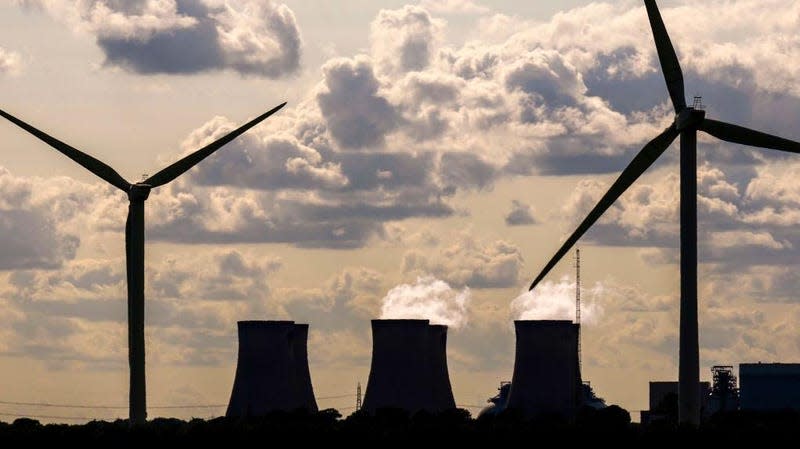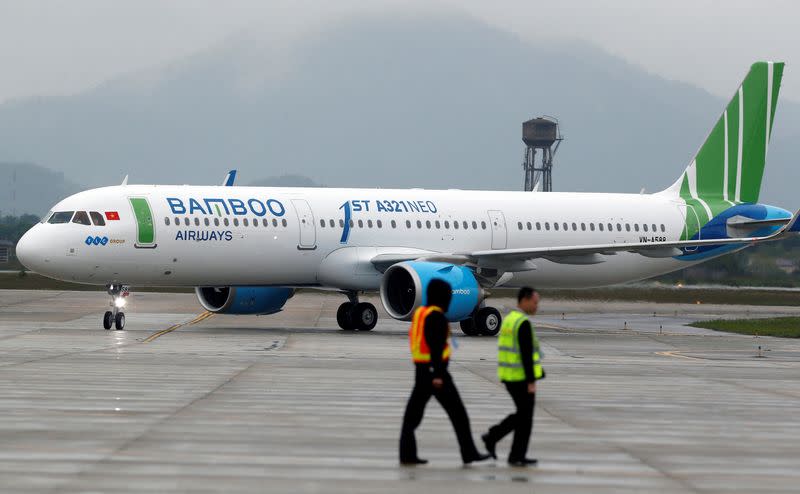Nitish Pahwa
Tue, September 26, 2023

President Joe Biden addresses striking members of the United Auto Workers union at a picket line outside a General Motors parts distribution center in Belleville, Michigan, on Tuesday. Jim Watson/AFP via Getty Images
The United Auto Workers’ historic strike does not seem likely to let up soon. On Friday, union president Shawn Fain announced that the work stoppages would expand to 38 more plants all across the country, having begun the week before in just three Midwestern car factories. There are now more than 18,000 autoworkers, from Nevada to Tennessee to Florida, out on the picket lines. Joining them on the line at a General Motors parts distribution center in Belleville, Michigan, on Tuesday was none other than President Joe Biden, the first sitting chief executive to ever appear at such a rally. During his brief appearance, the president told the strikers that “you deserve the significant raise you need and other benefits,” going on to say, “Wall Street didn’t build the country, the middle class built the country. Unions built the middle class.”
Biden’s support will increase the pressure on the major automakers, but it’s also punctuated the workers’ action in a different way. The UAW strike is indeed a labor story, but it’s also a climate story—and an important one. However this thing ends, it could help determine what role blue-collar workers will play in the country’s climate adaptation and energy transition efforts, a process that the Biden administration has dramatically moved along.
Beyond UAW’s demands for higher wages and better hours, a key issue in autoworkers’ beef with the Big Three carmakers is the accelerating shift to electric vehicles. Lawmakers have supercharged government investment, consumer sales are revving up, and manufacturers are rapidly introducing new product lines. But this future is not guaranteed to offer the same kinds of middle-class jobs and robust benefits that unionized autoworkers enjoy in many states.
For one thing, electric vehicles purportedly require fewer assembly-line workers than internal-combustion and hybrid models (although some researchers have disputed this popular talking point). On top of that, much of the money for new auto and car-battery plants—along with assistance in transitioning old fossil-fuel and automotive facilities into hubs for zero-emission technology—is going to union-hostile red states. Union workers rightfully fear that this evolving landscape may well exclude them, which is why the current strike’s demands include employment protections related to plant closures, boosts to retirement benefits, and new restrictions on the use of temp workers in factories.
The EV transition has had labor issues from the beginning. Federal stimulus funds disbursed to EV and clean-energy ventures in 2009 were not conditioned on any labor standards. (One of the most significant recipients of those funds, Tesla, has zero unionized employees in the U.S.) That money also bailed out the auto industry, whose slow recovery pushed the UAW to concede on compensation demands and workforce counts (a point Biden emphasized during his union address to explain why the UAW’s latest demands are warranted). As a result, the factories powering the now-booming EV market are “overwhelmingly nonunionized,” former UAW member Dianne Feeley has written.
This recent history has not inspired worker confidence in Biden’s repeated campaign promises of a “just transition” for labor from the fossil-fuel era, one in which there are opportunities for stable middle-class employment as we swap out oil and gas for wind and solar, internal combustion engines for battery fleets and fuel cells. This has been a thorn for Democrats for years, and one of the more significant obstacles in their climate agendas. Not too long ago, candidate Hillary Clinton was hounded over her comment that “we’re going to put a lot of coal miners and coal companies out of business,” something her opponent Donald Trump seized upon to (falsely) claim he’d never let such a thing happen as chief executive. And President Barack Obama’s clean-power goals were repeatedly characterized as a “war on coal,” despite the fact that coal had been declining for decades before he assumed office.
That attack line overshadowed Obama’s messaging around his investments in a climate-change transition to ensure that fossil-fuel laborers could apply their skills and know-how to develop wind, solar, nuclear, geothermal, and other clean energy sources. Still, there was reason for labor to mistrust the feds. As historian Sarah Milov has pointed out, when the federal government imposed new restrictions on Big Tobacco in the late 1990s, it offered several tobacco farmers buyouts for their fields—but did not grant them pathways toward other agricultural jobs that could support their livelihoods. Another instance from this summer: In late June, Democratic Maine Gov. Janet Mills vetoed a bill encouraging offshore wind turbine buildout because it required that relevant companies adhere to project labor agreements, which often enshrine higher wages and benefits for workers. It was only after substantial pushback that Mills later relented and agreed to sign offshore-wind legislation with some pro-worker carveouts, including collectively bargained salaries and bans on employing temp workers (a similar measure to what the UAW is fighting for).
At one point, the UAW would’ve had a bit of federal backing in the Biden administration’s proposed Build Back Better legislation, which helped kick off nationwide EV investments. In late 2021, however, Democratic Sen. Joe Manchin of West Virginia announced his opposition to the bill’s proposed $4,500 federal tax credit for drivers who buy union-made EVs, effectively excising the measure from future climate legislation—even though it had the support of both the UAW and GM. As it turned out, the only companies at the time whose products would qualify were the Big Three themselves.
There’s an argument to be made, as Manchin did, that restricting such benefits to customers of the country’s biggest carmakers could add an anti-competitive element to the EV race. But, viewed from another way, a credit like this may have had the benefit of encouraging more auto companies to negotiate in good faith with organizing workers. The credit might have also assured Ford, GM, and Stellantis that union labor would equate to better sales because of the resulting cost savings for car buyers interested in the typically expensive EV market. But thanks to Manchin (who was lobbied by anti-union carmakers like the notably EV-skeptical Toyota), no labor standards were attached to the legislation’s clean-tech disbursements. And now, one of the new strikes has landed in his backyard, with laborers at GM’s Parts Distribution Center in Martinsburg joining their UAW comrades on the picket lines.
So now, the frame of worker-climate clashes is playing out again in the political messaging around the current UAW pickets. Republican Georgia Gov. Brian Kemp, who’s welcomed federal green-energy investment, claims that his state’s anti-union policy makes it an ideal location for both EV executives and workers. Republican Ohio Sen. J.D. Vance tepidly claims to support the workers while arguing they’re getting screwed because the climate transition is dragging jobs to EV powerhouse China (which is false), in a line echoed by Mike Pence and Ron DeSantis, the latter of whom wants to retract all clean-car subsidies. Other 2024 GOP contenders like Tim Scott and Nikki Haley have taken the opportunity to dump on unions and EVs as a whole, earning the former a filed UAW labor complaint. There’s much speculation on whether Donald Trump will actually stand with UAW strikers during his visit to Michigan, even though Shawn Fain has ruled out any possibility of his union endorsing the Republican front-runner, and there is as of yet no indication that Trump even supports the strike efforts (although he is certainly targeting autoworkers with his upcoming Michigan visit).
In fact, what Republicans are missing in their lines here is that UAW isn’t against EVs so much as it is against being left out of EVs. After the strike launched last week, Fain co-published a Guardian op-ed with Democratic Rep. Ro Khanna that proclaimed, “there is no good reason why EV manufacturing can’t be the gateway to the middle class.” This followed Fain’s support of a multibillion-dollar Biden administration just-transition investment, which the union president praised as “reject[ing] the false choice between a good job and a green job.” In the Michigan Senate, which is considering a bill to create a just-transition office within the state’s Labor Department, UAW members have testified in favor of the legislation. Biden should keep seizing the moment, then, to explain why his EV investments are good both for jobs and for the climate.
As for the auto industry, executives whose companies have received generous federal funds should set an innovative, fair just-transition framework for other EV makers going forward. If UAW can swing that out with the Big Three, the effect could spread to other climate-related sectors sorely in need of uniquely skilled labor that will work for reasonable pay: electricians, wind and solar technicians, construction workers. It’s not just Biden who’s banking on blue-collar workers getting a fair shake in the clean-energy future. It’s all of us.
























